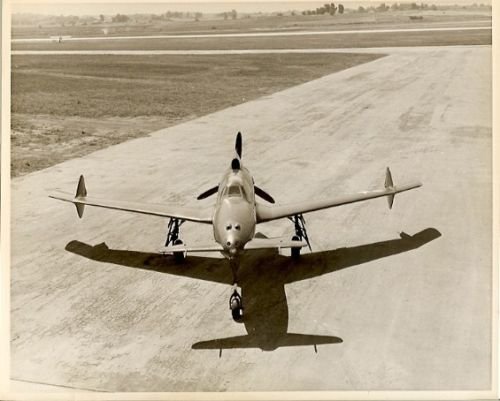Here is a quote I found...
Issued on November 27 1939, The Curtiss XP-55 Ascender was another response to Circular Proposal R-40C. It called for a fighter that would be much more effective than any extant--with a top speed, rate of climb, maneuverability, armament, and pilot visibility, all of which would be far superior to those of any existing fighter.
Earlier, I asked what benefits a design such as this might be thought to have over the existing conventional layouts...using these objectives, my thoughts...
1. Top speed. With the proposed engine, possibly a top speed that was on a par with the later P-47 and P-51 versions...450mph and above. But, as everyone found out, there is a limit to what a piston engine can do, as well as the aerodynamics of the airframe itself as speeds approached 500mph.
2. Rate of climb. With that much power, climb rate may well have been superior.
3. Maneuverability. Not too sure this would have been a winner. The test flights ran into problems with pitch control and stalling...not the kinds of problems wanted in a fighter. High angle of attack behavior seems to have been a significant issue.
4. Armament. Descriptions vary between the proposed number of machine guns and cannon...but for the 1939 time frame, the proposals didn't significantly exceed the existing armament of the P-39 or P-38. In its final configuration of four .50 m/g, it was at best average for the time.
5. Visibility. Not the best, even for 1939, the P-39 and P-38 both had canopy designs with fewer obstructions. The relatively long nose would have been a detriment in a turning fight since the pilot's visibility would have been reduced...this would have been particularly troublesome when trying to line up a firing solution on a turning target.
Makes me wonder what the airplane would have been like given the original engine power and the development time to iron out the stability issues.



















